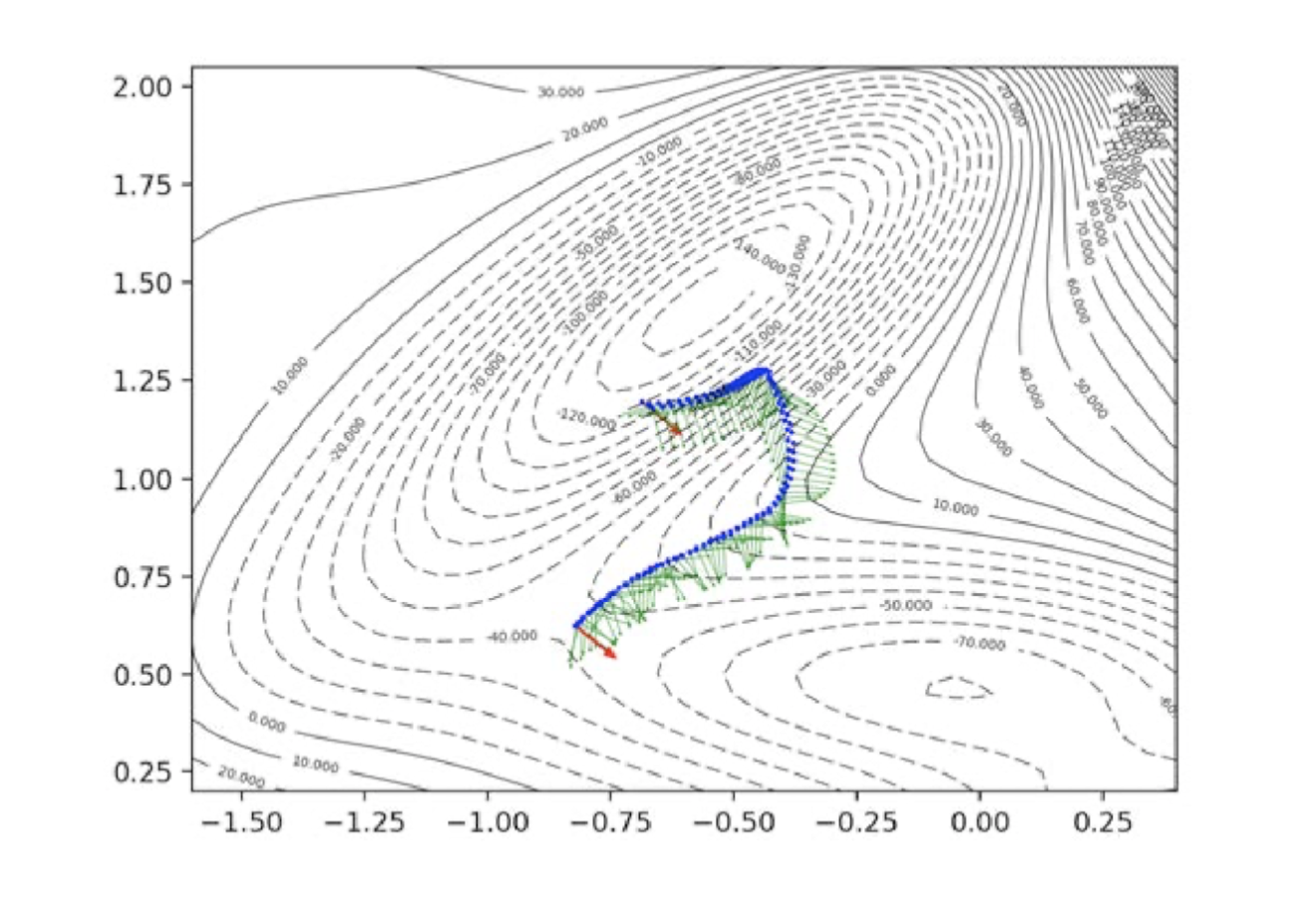Interplay between the gentlest ascent dynamics method and conjugate directions to locate transition states
J. M. Bofill, J. Ribas-Ariño, R. Valero, G. Albareda, I. de P. R. Moreira, W. Quapp. J. Chem. Theory Comp., 15 (2019) 5426.

Behaviour of the curve GAD-CD (blue) on a PES. The set of arrows (green) shows the evolution of the control vectors.
An algorithm to locate transition states on a potential energy surface (PES) was proposed and described. The technique is based on the gentlest-ascent-dynamics (GAD) method where the gradient of the PES is projected into a given direction and also perpendicular to it. In the proposed method, named GAD-conjugate-direction (GAD-CD), the projection is not only applied to the gradient but also to the Hessian matrix. Then, the resulting Hessian matrix is block diagonal. The direction is updated according to the GAD method. Furthermore, to ensure stability and to avoid a high computational cost, a trust region technique is incorporated and the Hessian matrix is updated at each iteration. The performance of the algorithm in comparison with the standard ascent dynamics is discussed for a simple two-dimensional model PES. Its efficiency for describing the reaction mechanisms involving small and medium size molecular systems is demonstrated for molecular systems of interest in chemistry.
